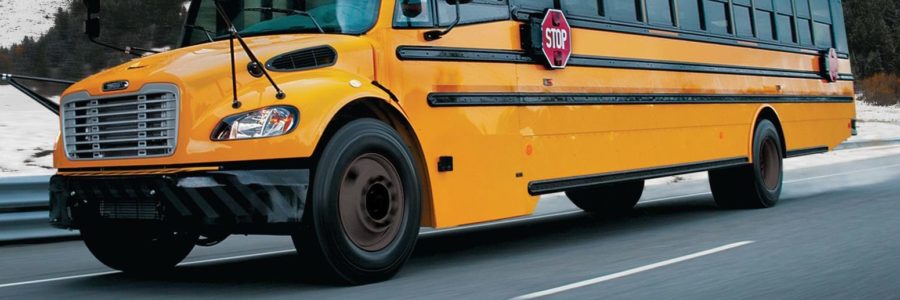When it comes to driving a bus in inclement weather, you want to make sure you have all the right information about being prepared and getting everyone to their destination safe and sound. Whether you’re a bus driver trying to learn about weather safety or a parent fretting about your child’s trip to school throughout the blistering season, it will help to know the do’s and don’ts of snow safety for bus drivers.
The Do’s of Weather Preparedness for Bus Drivers
Drivers can’t take anything for granted. Here’s how to be fully prepared for the winter season:
- Anticipate the conditions: Don’t wait until the last minute to pay attention to the weather. Make the right call for whether you feel safe driving in the snow, ice or other conditions, and stay informed about upcoming weather and alternate routes that will get you and the students where they need to go.
- Dress appropriately: Hats, boots, gloves and other winter clothing will allow you to stay warm and focus on the roads.
- Follow the law: Know and adhere to your state laws about school buses and speed limits.
- Drive slowly:Don’t drive recklessly on highways and main roads, even if drivers around you move quickly. If weather conditions aren’t ideal, drive below the speed limit at a rate that feels comfortable and safe. Use additional caution in school zones, loading zones and bus stops. It’s more important to keep everyone safe than to stay on schedule.
- Keep the vehicle prepared: Make sure your bus is in good driving condition and ready to take on the winter weather. Keep precipitation off your vehicle as much as possible and make sure the windshield and wipers are free of snow and ice.
- Take action based on specific conditions and areas: Employ safe driving techniques based on your surroundings. You’ll always have to be on the defensive and stay reactive to anything that happens around you. Reduce your low beams in fog, keep moving in snow so you don’t lose traction and base your decisions on the day’s specific conditions. Keep in mind that bridges and overpasses typically freeze before other driving surfaces.
The Don’ts of Driving a Bus in Inclement Weather
Likewise, there are behaviors you’ll want to literally steer clear of as a safety-minded bus driver in winter:
- Wait until the last minute: You should know far in advance what to expect and react accordingly in taking care of yourself, your bus and your passengers. Don’t rush or try to make up time in inclement conditions, no matter how late you might be running.
- Drive near children or parents: Once the bus is stopped, wait until all children and other pedestrians have reached a safe place before you begin moving again.
- Get close to other vehicles: You never know how other drivers are going to react to the weather, regardless of what type of vehicle they’re in. Drive defensively and don’t follow closely behind any other vehicles.
- Use brakes or cruise control inappropriately: When you apply brakes, do so gently so the wheels don’t lock or throw you into a skid. If roads are slick, avoid using cruise control.
- Don’t take chances: If you feel like an area or action is even remotely unsafe, avoid it.
If you’re looking for a quality vehicle so you can get students to and from school safely in every season and condition, trust Rohrer Bus. We offer the safest, most efficient transportation solutions on the market. Contact us today by calling 1-888-287-1538 for more information.





